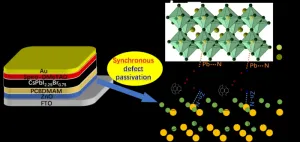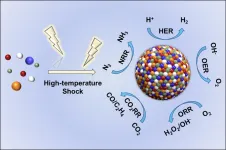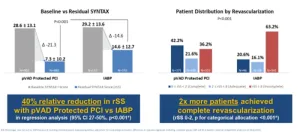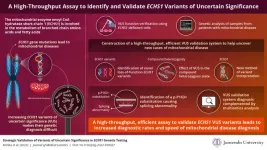(Press-News.org)
Globally, critical thinking (CT) is regarded as a highly desirable cognitive skill that enables a person to question, analyze, and assess an idea or theory from multiple perspectives. CT has become an integral and mandatory part of global educational curricula, but its definition varies across contexts and cultural backgrounds.
To assess the implementation of CT, the Organization for Economic Cooperation and Development (OECD) conducts the Teaching and Learning International Survey (TALIS). In a 2018 survey (TALIS 2018), only 12.6% of lower secondary schoolteachers in Japan taught CT, compared to the global average of 58.1%. To understand this gap, Assistant Professor Kazuyuki Nomura from Chiba University, Japan, set out to understand the reason underlying Japan’s dismal performance in TALIS 2018. The study was made available online on March 31, 2023, and published in Educational Philosophy and Theory.
“Japan’s poor scoring in teaching CT puzzled me after I read the TALIS 2018 Results. Granted, CT varies from context to context, but little research has been conducted to understand what CT means in Japanese classrooms. Therefore, I took it on,” explains Dr. Nomura, an expert in intercultural education, speaking of his motivation for the study.
In this qualitative study, Dr. Nomura conducted semi-structured interviews with 12 certified Japanese schoolteachers from diverse backgrounds, including one from a school for children with special educational needs (SENs), between May and July 2022 to understand their perspectives on CT and the outcomes of TALIS 2018.
All participants agreed that the Japanese adjective “hihanteki” for the English word “critical” had a negative undertone, making most teachers hesitant about introducing CT to their classrooms. Most of the participants also felt that the use of “hihanteki shikoo” as a direct translation of the words “critical thinking” in the TALIS 2018 was not correct. Many teachers were unaware that the national curriculum guidelines contain the concept of CT. Teachers who knew about it and had tried integrating it into their pedagogy were in a sheer minority.
By contrast, multidimensional-multiperspective thinking (MMT), which is a facet of CT, enjoys more acceptance and popularity in Japan since the curriculum guidelines explicitly promote MMT. The study found that while most participants shied away from implementing CT, they were comfortable with MMT and used it regularly in their teaching. Additionally, almost all participants suggested that teaching MMT depends on socioeconomic status (SES), and that teaching MMT in low-SES schools was challenging.
Moreover, “empathy” is a hidden, central pillar of the Japanese school curriculum. All participants concurred that empathy is a core value in Japanese education, and most of them felt that it is impossible to practice CT or MMT without teaching empathy. Coupling MMT with empathy increased the autonomy of schoolteachers in Japan. They struck a delicate balance between the national curriculum, the school culture, and their teaching practice. As a result, they managed to circumvent the power of OECD-led global education.
Still, Dr. Nomura maintains that the merits of global CT can be combined with the Japanese teachers’ emic understanding of CT to get the best of both worlds. Through CT skills and empathy, Japanese teachers can enable a growingly diverse student population to think big and beyond the perimeters of Japan. Although CT and politics go hand-in-hand, as per the law, Japanese schools cannot teach politically controversial topics and must maintain neutrality. To remedy this, he recommends that teachers use non-Japanese or fictional examples to implement CT in their classrooms.
“As Japan is now becoming increasingly multicultural, teachers could use CT skills to help children think about Japan’s future, enhance open-mindedness, and live together with others with equity and dignity,” suggests Dr. Nomura.
For future research, classroom observations could be the best candidate, given that MMT is a core educational goal in the current national curriculum. The results of this study could thus help spark a much-needed discussion about CT teaching in Japan and elsewhere.
About Assistant Professor Kazuyuki Nomura from Chiba University
Dr. Kazuyuki Nomura is currently an Assistant Professor at the Graduate School of Global and Interdisciplinary Studies, Chiba University in Japan. Dr. Nomura is an educational researcher, and his research areas cover intercultural education and curriculum studies. He has published articles in reputed journals to his credits and has also co-authored several books. Dr. Nomura is a member of many educational research associations and has received accolades for his research contributions.
END
Solar cells are a critical component to the transition to renewable energy sources, and enhanced power conversion efficiency (PCE), or amount of power captured with a given amount of sunlight, increases the practicality of solar power in a society with high energy demands. Perovskite solar cells that use all-inorganic perovskite light-absorbing materials are more thermally stable than organic-inorganic hybrid counterparts, but suffer from lower PCE. Researchers have overcome this hurdle in all-inorganic perovskite solar cells ...
Children’s Cancer Research Fund has awarded $250,000 to an innovative new approach to treating leukemia – blood cancer – being developed at UVA Cancer Center.
The grant to John H. Bushweller, PhD, of the University of Virginia School of Medicine, is part of the national nonprofit’s efforts to accelerate the development of new and better treatments for difficult-to-treat cancers.
“This funding makes it possible to continue developing a novel approach to treatment for a form of pediatric leukemia with a very poor prognosis,” said Bushweller, of UVA’s Department of Molecular Physiology and Biological Physics. “For ...
INDIANAPOLIS – Every 40 seconds, someone in the U.S. has a stroke. Every 3.5 minutes, someone in the U.S. dies of a stroke. Stroke patients have multifaceted needs, requiring complicated care delivered by multidisciplinary teams.
In the journal Stroke’s annual review of quality improvement advances in stroke care studies, Regenstrief Institute Research Scientist Dawn Bravata, M.D., and colleagues update researchers, clinicians and healthcare administrators on advances in the field, highlighting the challenges of scalability and sustainability.
“Quality improvement exists to ensure that every patient with stroke or at risk of stroke is getting the care ...
High-temperature shock (HTS) is an emerging synthesis method with kinetics-dominated non-equilibrium characteristics, which can achieve an ultrafast heating/cooling rate of ~10^5 K/s and a peak temperature larger than ~3000 K within a time scale of seconds or milliseconds, and is widely used in the preparation of high entropy content, thermodynamic metastable phase and defect-rich materials. Amongst these significant advances, nanoscale high entropy alloys (HEA) are particularly prominent in heterogeneous catalytic reactions with remarkable ...
DANVERS, Mass., May 18, 2023 – Abiomed, part of Johnson & Johnson MedTech[1], announces results of a third-party analysis showing that utilizing Impella during high-risk percutaneous coronary intervention (PCI) procedures may help physicians achieve a more complete revascularization compared to high-risk PCIs supported using an intra-aortic balloon pump (IABP). Previous studies have shown that a more complete revascularization can lead to longer survival[2],[3], a greater reduction in heart failure and angina symptoms[4], and an improved quality of life for the patient[5].
This analysis shows ...
The gene ECHS1 encodes for enoyl-CoA hydratase short-chain 1, a mitochondrial enzyme involved in branched-chain amino acid and fatty acid metabolism. Rare inherited mutations in the ECHS1 lead to mitochondrial ECHS1 deficiency, resulting in the disruption of the metabolism of the essential amino acid valine and accumulation of valine intermediates.
In fact, ECHS1 is one of the most common causative genes of mitochondrial diseases. These mutant enzymes also cause brain lesions and severe delays in a child’s psychomotor development, along with elevating blood lactate levels. ECHS1 variants have been reported globally, and many disease-causing ...
Every second, the planet loses a stretch of forest equivalent to a football field due to
logging, fires, insect infestation, disease, wind, drought, and other factors. In a recently published study, researchers from the U.S. Geological Survey Earth Resources Observation and Science (EROS) Center presented a comprehensive strategy to detect when and where forest disturbance happens at a large scale and provide a deeper understanding of forest change.
The study was published on Feb. 28 in the Journal of Remote Sensing.
“Our strategy leads to more accurate land cover ...
Most global scenarios and governmental targets for decarbonizing the transport sector consider battery-powered electric vehicles as a main part of the solution. Enormous amounts of raw materials are needed to build enough batteries and ensure a transition to low-emission vehicles.
Access to lithium is critical, as it is used in all types of EV batteries.
Future demand needs to decrease
“It seems very likely we'll have a shortage. The key lies in the demand. The demand needs to decrease to avoid long-term supply problems,” ...
Satellites launched into outer space could send back improved warnings of dangerous solar storms thanks to a breakthrough in the way scientists use space weather measurements.
Experts from the University of Reading have found that using satellite data that is less reliable but is returned to Earth rapidly can be used to improve the accuracy of solar wind forecasts - which are harmful streams of charged particles sent from the sun - by nearly 50 per cent.
Their research, published today (Thursday, 18 May) in Space Weather, ...
A new study uncovers how the interplay between Sargassum spp., plastic marine debris and Vibrio bacteria creates the perfect “pathogen” storm that has implications for both marine life and public health. Vibrio bacteria are found in waters around the world and are the dominant cause of death in humans from the marine environment. For example, Vibrio vulnificus, sometimes referred to as flesh-eating bacteria, can cause life-threatening foodborne illnesses from seafood consumption as well as disease and death from open wound infections.
Since 2011, ...









